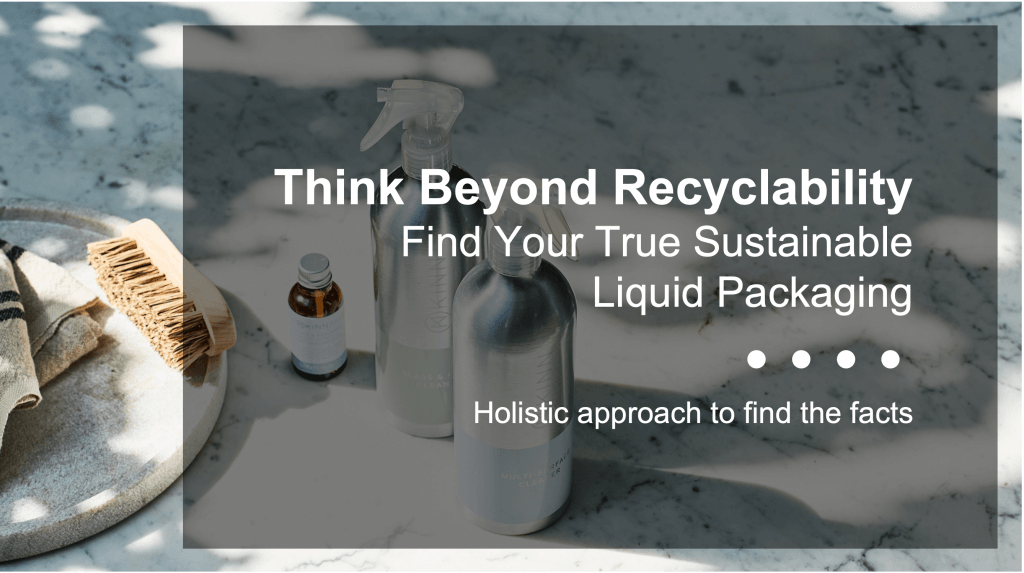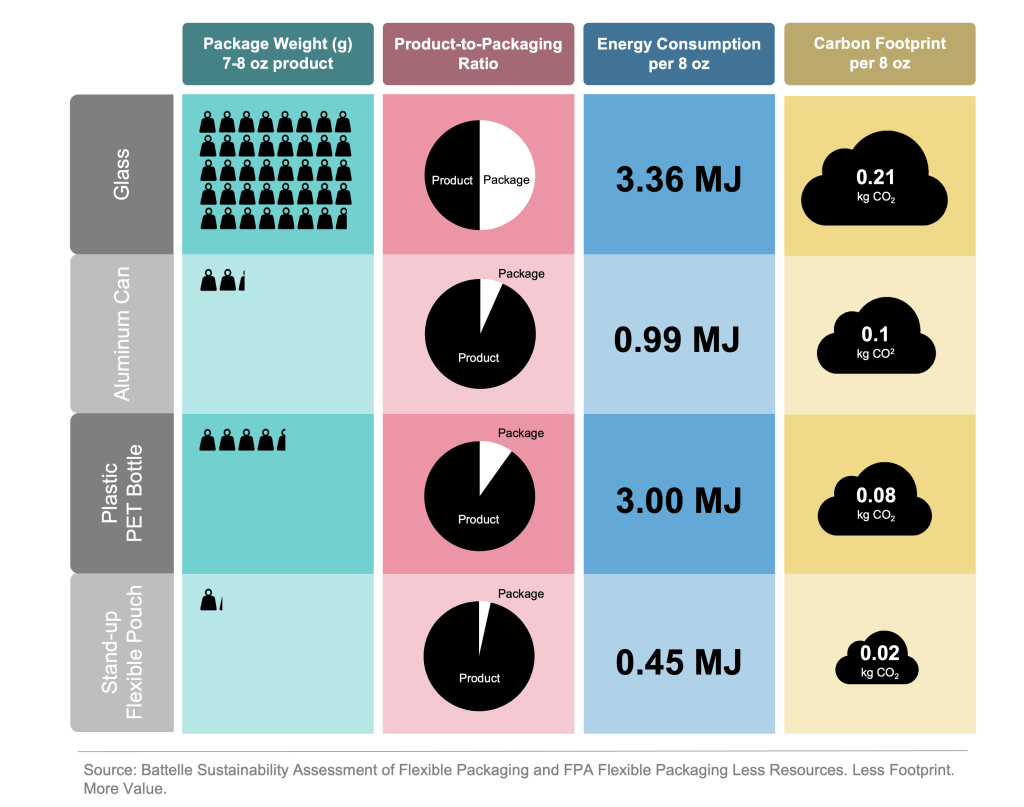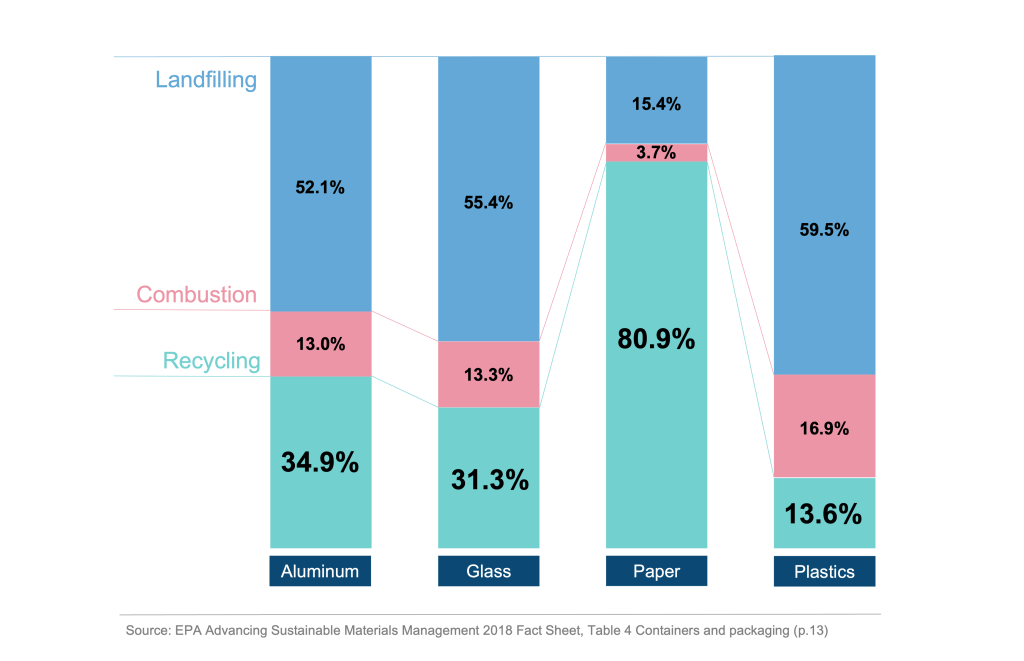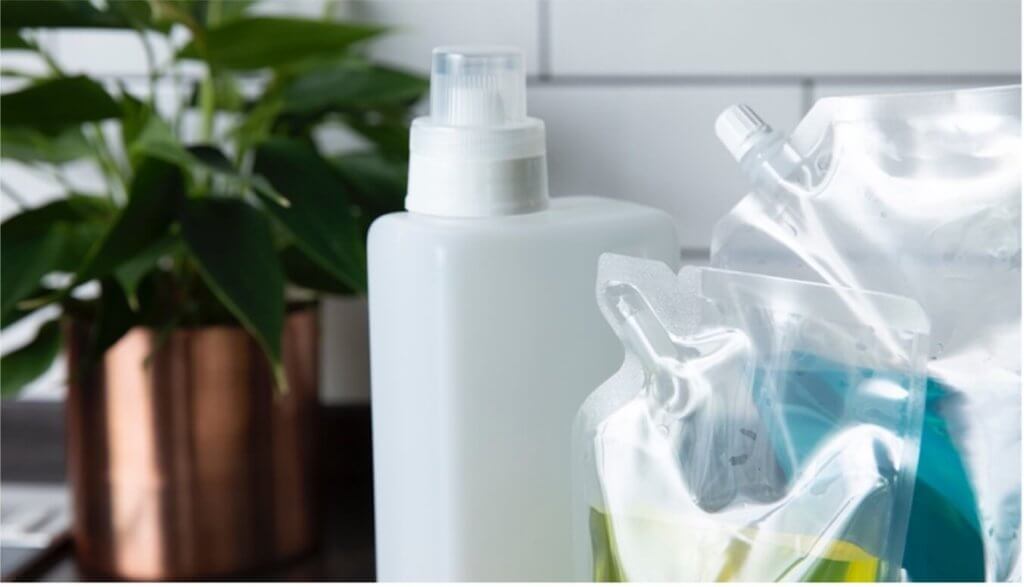Some brands are transforming their rigid plastic bottles to glass or aluminum to make their packaging more sustainable. Sure, glass and aluminum can be great packaging options. But is glass or aluminum really more sustainable than plastic packaging? From a holistic point of view, they may not be the most sustainable options compared to plastic packaging.

Most of us have heard that plastic has been polluting our planet. But when you think about it, waste management is the problem, not the packaging itself. Often, we focus too much on disposal and don’t talk about the reality and full scope of the packaging lifecycle. This blog will solely focus on glass, aluminum, and plastic packaging. Each type of packaging has its pros and cons, and it is essential to fully understand all of them when choosing which is best for you.
Resource:
GHG Emission and Energy Consumption: A Factor Worth Discussing
Are you aware of the manufacturing package process? Both glass and aluminum have been utilized as packaging for over a century. But their production processes have mostly stayed the same. Glass goes through a melting process that is very energy-intensive with a high temperature of around 3,000F (1,600C). More and more new energy-efficiency technologies are vigorously improving. However, reducing greenhouse gas (GHG) emissions and energy consumption to make glass packaging is still challenging. Aluminum has a smelting process, the process of extracting metals from its ore, which can release harmful byproducts and GHG emissions. The good thing about aluminum is that the recycling aluminum process cuts energy consumption by 95%, according to the U.S. Energy Information Administration.1 Yet, only 35% of aluminum containers and packaging are currently recycled, according to the data from the EPA.2 That means that most of the aluminum packaging we see in the market is produced from raw materials.

In addition to manufacturer packaging, transportation is another significant contributor to GHG emissions and energy consumption. According to the EPA data from 2020 U.S. GHS Emissions by Sector, transportation accounted for the largest portion (27%) in the US.3 Transporting unfilled packaging for the same amount of product requires 26 truckloads of glass jars versus one truckload of flexible pouches.4 Eliminating unnecessary trucks transporting items can significantly impact GHG emissions.
Moreover, packaging weight matters. The heavier the package is, the more energy (in this case, fuel) it needs to get moving. It is obvious that plastic packaging, especially flexible packaging, is the lightest type of packaging. Aside from the packaging weight, we need to discuss secondary packaging. Fragile packaging, like glass, usually requires secondary packaging to protect the primary packaging. Adding additional packaging means more materials and energy to produce the overall packaging.
Face the Reality of “Sustainable” Recyclable Packaging
Many companies that transitioned to glass or aluminum packaging claim that their new packaging is more sustainable because they are reusable and recyclable. Yes, glass and aluminum can recycle without degradation. The recycling rate of plastic is indeed far below other types of packaging. Thus, glass and aluminum are the most sustainable packaging regarding recyclability. But the reality of recycling is far from an ideal situation. We have been taught to “Reduce, Reuse, Recycle” from an early age. Many of us put “recyclable” packaging in our curbside recycling bin, thinking packaging will be recycled. But most of the packaging in recycling bins ends up in landfills.

Not to mention that the media is expressing that plastic is polluting our ocean, but plastic does not end up in the ocean by itself. People are the primary cause of pollution, and that is the problem.
Which Packaging is the more Sustainable?
There are many answers to this question. However, one thing is true: reduction is key to improving sustainability. Whether using a glass or aluminum bottle and refilling with plastic refill pouches or replacing the glass with lightweight plastic, a small change could have a significant impact.
Resource:
- What is a refill pouch? Everything you need to know, from the materials to the benefits of refill pouches.
- “Reduce” Packaging Plastics is the Fastest Way to Improve Sustainability
- Plastic reduction with refill pouches can be equivalent to removing over 400 million bottles each year
Liquid Refill Pouch
Are you interested in refill pouches? ZACROS has been manufacturing refill pouches for home and personal care products for over 25 years. ZACROS provides a wide range of refill pouches, from a spoutless laminated pouch to a monomaterial spout pouch. We assist from material selections and designs to filling assist. Contact us today to learn more about sustainable refill pouch options.

References
Energy Information Administration. Energy and the Environment Explained: Recycling and Energy, 17 Aug. 2022.
Environmental Protection Agency. Advancing Sustainable Materials Management: 2018 Fact Sheet, Dec. 2020.
Environmental Protection Agency. Fast Facts on Transportation Greenhouse Gas Emissions.
Flexible Packaging Association. Flexible Packaging Industry Overview, July 2016.